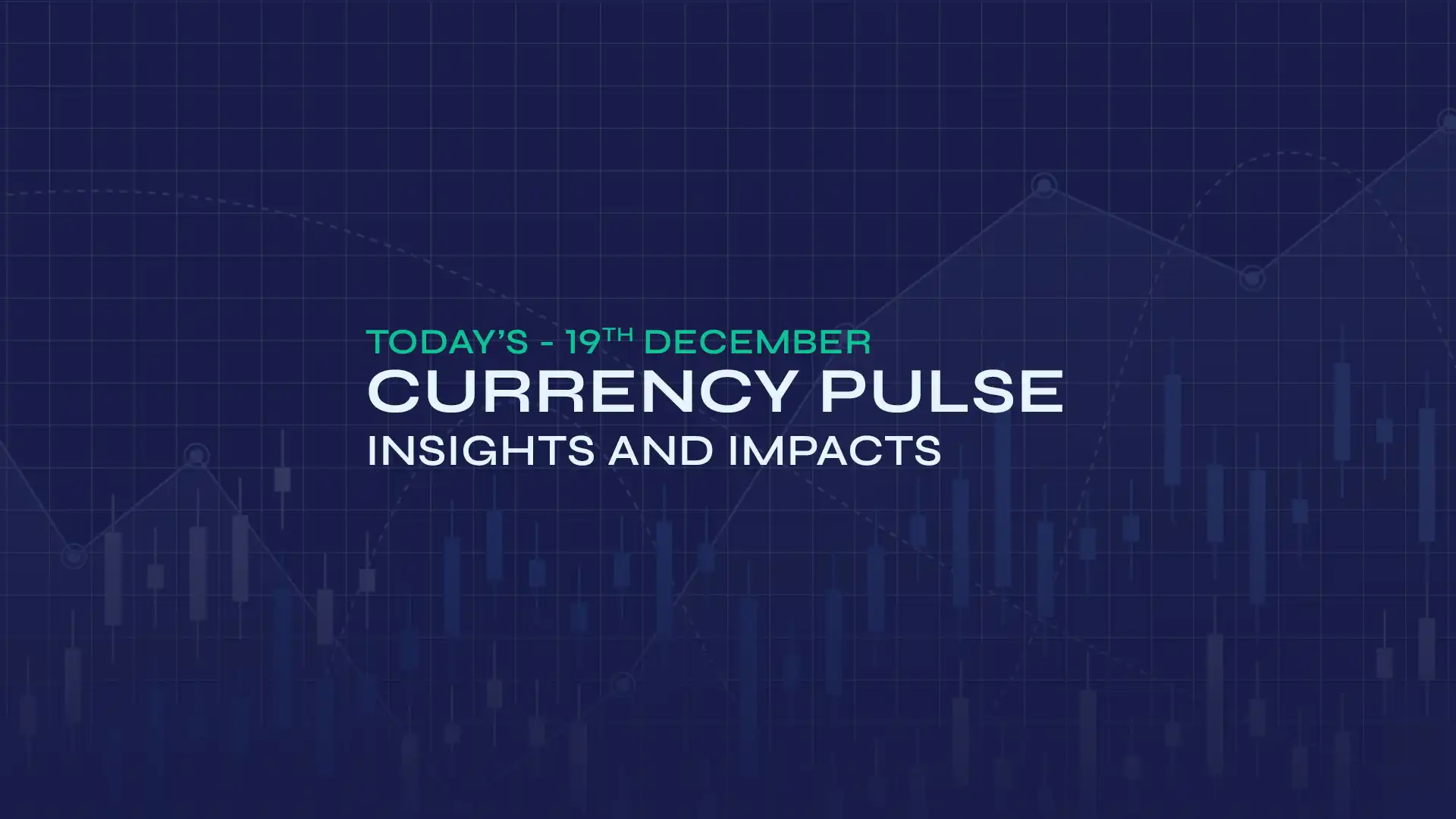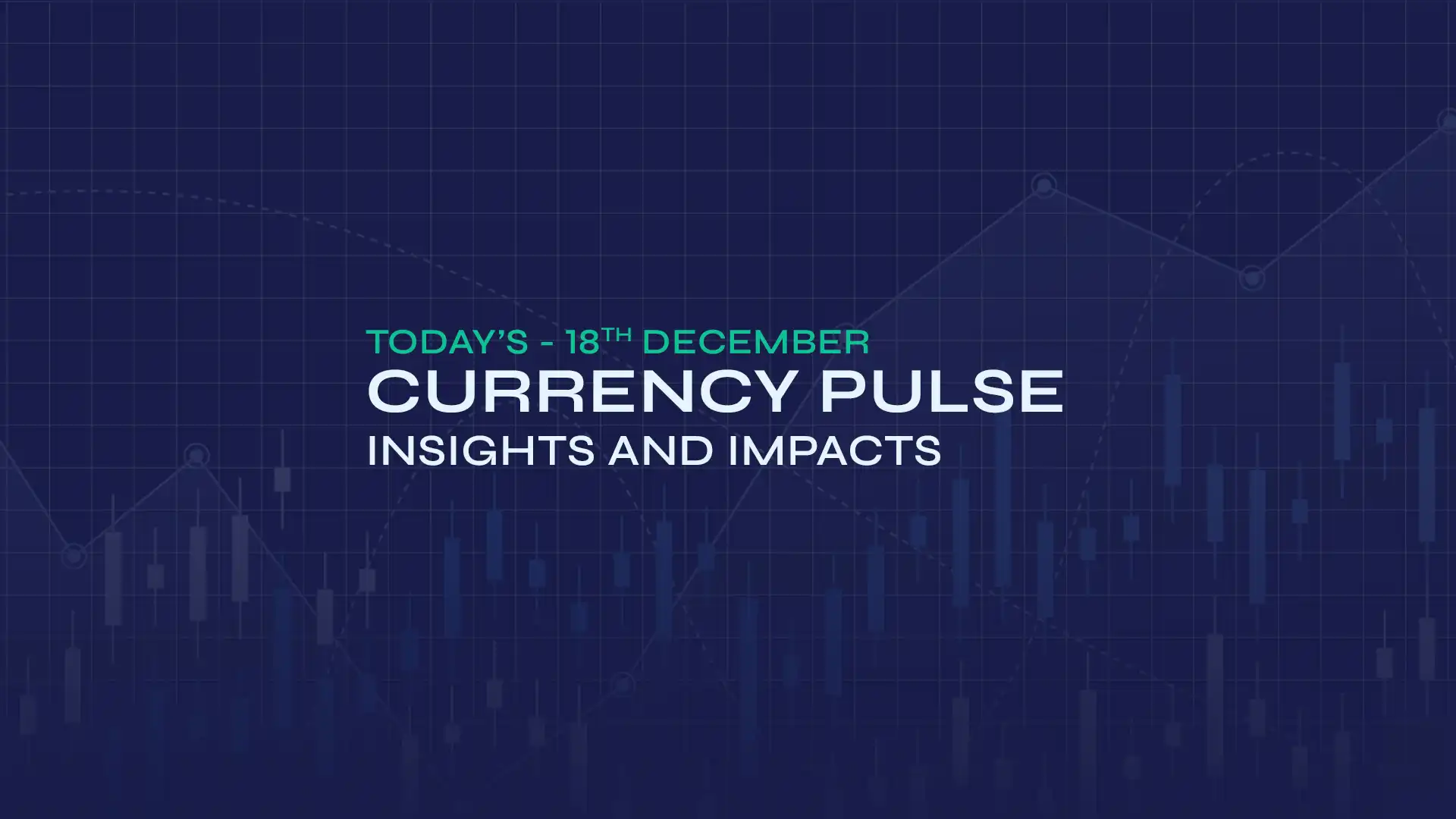The GBP/USD pair extended its rebound from the 1.3140 support zone, the lowest level since May, gaining moderate traction in Thursday’s Asian session. The pair climbed back and traded above the 1.3200[1] handle, supported by a modest pullback in the US dollar. It is believed that the broader sentiment remains cautious, as traders weigh the near-term weakness in the greenback against lingering uncertainties surrounding both the US and UK economic[2] outlooks.
Market commentators[3] point out that the US Dollar Index (DXY) retreated further from its recent two-week high, as investors scaled back positions following the Federal Reserve’s hawkish policy stance on Wednesday. Concerns over a potential US government shutdown[4] and its possible drag on economic performance have also undermined the US dollar’s appeal. Nonetheless, Fed Chair Jerome Powell’s[5] comments pushing back against market expectations for a December rate cut helped limit losses, leaving the greenback supported near recent ranges.
Market reports[6] point out that in the UK, sentiment remains fragile ahead of the Autumn Budget on November 26, with reports suggesting that the Office for Budget Responsibility may lower productivity forecasts by 0.3%, widening the fiscal gap by over £20 billion. Rising fiscal risks, coupled with soft inflation data, have strengthened expectations for a 25-basis-point rate cut by the Bank of England (BoE)[7] in December. These factors continue to weigh on the pound’s medium-term outlook, keeping upside potential limited.
Analysts[8] indicate that in the coming term, traders are keen to focus on upcoming US economic data releases, including GDP and core PCE inflation figures later this week, for fresh cues on Fed policy direction. Weak readings could reinforce US dollar softness and provide short-term support for GBP/USD[9]. The GBP to USD exchange rate may see temporary strength under these conditions. However, sustained gains may be difficult unless UK fiscal and growth prospects show signs of stabilizing.
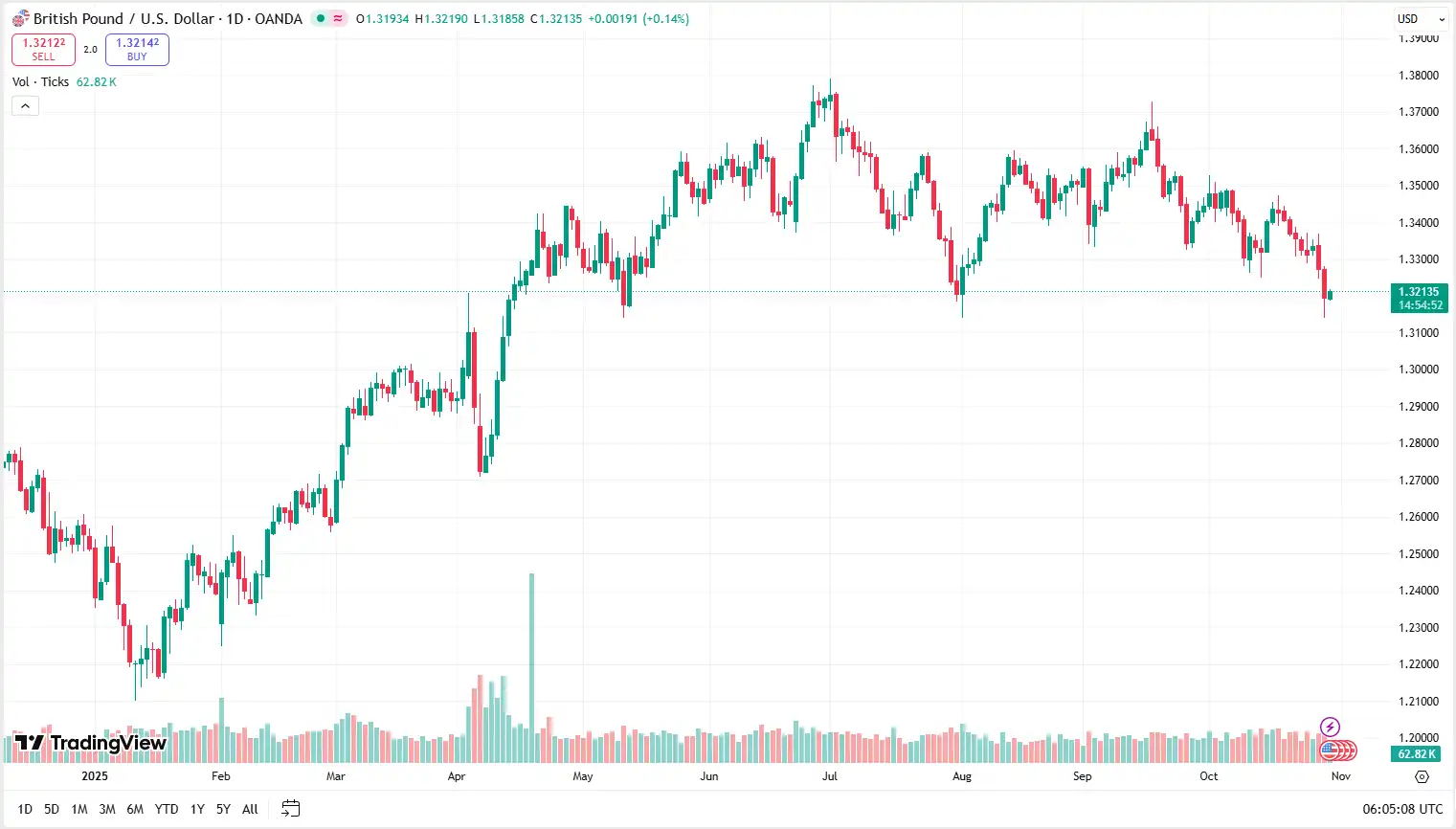
EUR/GBP Advances as Traders Await ECB Decision
EUR/GBP advanced by 0.30% in Wednesday's early hours to trade around 0.8805[10], marking its highest level since May 2024. It is believed that the pair’s upward momentum[11] reflects renewed demand for the euro as markets await today's scheduled European Central Bank (ECB) policy announcement. The ECB is widely expected to maintain interest rates[12] for a third consecutive meeting, with inflation easing and signs of economic stabilization emerging across the Eurozone. Traders will focus on President Christine Lagarde’s[13] post-meeting comments for any hints on future policy, as even mildly hawkish language could provide additional short-term support to the single currency.
Market reports[14] point out that despite the Euro’s strength, lingering political and fiscal risks remain a headwind. Standard & Poor’s[15] recent downgrade of France’s sovereign rating has dampened regional sentiment, while mixed Eurozone data, such as slower Spanish GDP growth and weaker retail consumption, underscore an uneven recovery. However, these concerns have so far been outweighed by softer economic signals from the UK, which continue to undermine the pound.
Market observers[16] point out that the GBP remains pressured by weak inflation figures and expectations of fiscal tightening in the upcoming Autumn Budget. Reports suggesting potential tax increases to close a £35 billion fiscal gap[17] have further weighed on sentiment. Market pricing now points to a possible 25-basis-point rate cut by the Bank of England (BoE)[18] as early as November, although most economists still expect the first move in early 2026.
Analysts[19] indicate that the pound may face additional downside risks if upcoming US data, such as GDP and jobless claims, reinforce the global risk-off tone and strengthen the US dollar. Persistent concerns over UK productivity and fiscal health[20] are likely to limit GBP recovery, leaving EUR/GBP biased to the upside in the near term, though medium-term gains may moderate if Eurozone growth softens further.
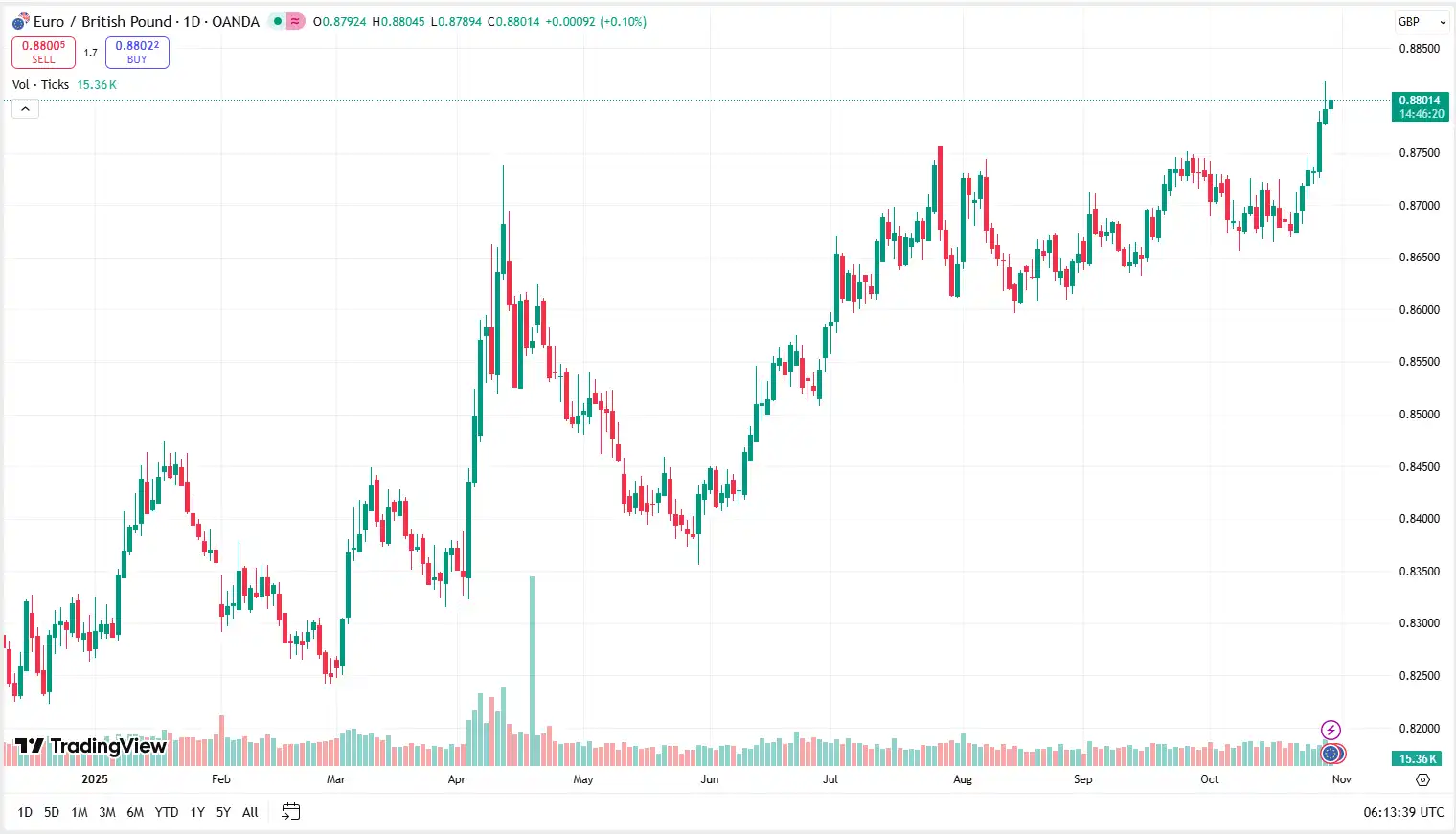
AUD/USD Steadies Amid Trade Optimism Rebound
The AUD/USD pair traded steadily around 0.6590[21] in Thursday’s Asian session, regaining traction after recovering from losses in the previous session. The Australian dollar is believed to remain supported following improved risk sentiment after the meeting between US President Donald Trump and China’s President Xi Jinping[22] in South Korea. Market reports[23] point out that the reduction of US tariffs on Chinese goods to 47% from 57% and the resolution of the rare earth dispute boosted market confidence, while renewed Chinese purchases of US soybeans also signalled a step toward easing trade tensions. Given Australia’s close trade relationship with China, these developments lent further support to the Aussie.
Market commentators point out that domestic factors also underpinned the Australian dollar, with Australia’s hotter-than-expected Q3 inflation and August CPI data reducing expectations for near-term monetary easing by the Reserve Bank of Australia (RBA)[24]. RBA Governor Michele Bullock[25] acknowledged ongoing labour market tightness, suggesting that the central bank may maintain a cautious stance on rate adjustments. This helped the AUD find stability despite global growth concerns.
Analysts, from a technical perspective, indicate that AUD/USD[26] continued to maintain a neutral bias within a rectangle pattern on the daily chart. The pair[27] is currently holding above the nine-day EMA at 0.6549, reflecting short-term bullish momentum. Immediate resistance lies at 0.6600, followed by 0.6630, with a sustained break potentially opening the path toward the September high near 0.6707. On the downside, support levels are seen at 0.6546–0.6550, with further weakness likely below 0.6450.
Analysts[28] indicate that traders are set to monitor upcoming US GDP and initial jobless claims data, which could influence the US dollar’s trajectory. Weaker-than-expected readings could limit US dollar gains and offer short-term support to AUD/USD[29], though medium-term risks remain tied to global growth uncertainty and the RBA’s cautious policy outlook.
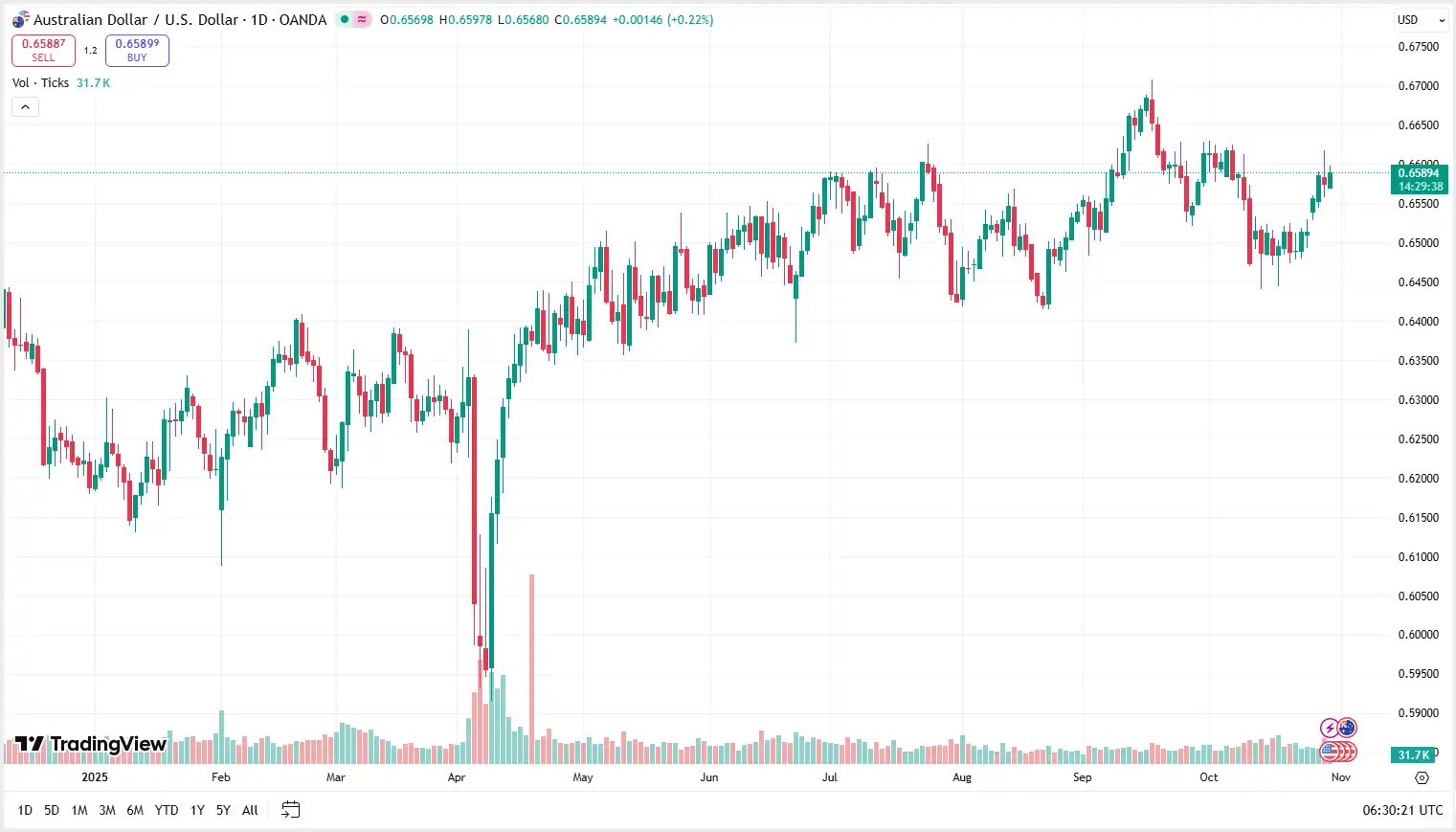
NZD/USD Strengthens Amid Improved Business Confidence
The NZD/USD pair regained momentum in Thursday’s Asian session and traded near 0.5770[30], recovering from previous losses. The New Zealand dollar is believed to gain strength after the ANZ Business Confidence Index[31] jumped to 58.1 in October from 49.6 previously, its highest level since February. The accompanying Activity Outlook also rose to 44.6, signalling growing optimism in New Zealand’s[32] business sector. The upbeat data helped offset broader risk concerns, lending near-term support to the kiwi against the US dollar.
Market reports[33] point out that market sentiment was further bolstered by reports suggesting progress toward a potential US–China trade deal, with Presidents Trump and Xi Jinping expected to meet later today in South Korea. As New Zealand’s economy remains closely tied to China through trade, any improvement in Chinese growth expectations[34] tends to strengthen the NZ dollar. Meanwhile, China’s Premier Li Qiang[35] highlighted the importance of policy stability and risk management, easing investor concerns over systemic risks in the region.
Market reports[36] point out that in the UK, the Fed’s 25 basis point rate cut on Wednesday provided mixed cues for the US dollar. While the move aligned with market expectations, the Fed’s[37] indication of continued balance sheet reduction and uncertainty over future rate cuts limited downside pressure on the dollar. Fed Chair Jerome Powell[38] emphasized that further easing in December is “far from certain,” keeping traders cautious amid a still-unclear policy path.
Analysts indicate that the upcoming US economic data, including initial jobless claims[39] and ISM manufacturing figures, will be closely monitored for signs of labour market softness and slowing business activity. Weaker data could reignite expectations for additional Fed easing, potentially supporting NZD/USD[40] in the short term. However, medium-term risks remain tilted toward the downside, with global growth uncertainties and Fed policy divergence likely to cap the pair’s upside momentum.
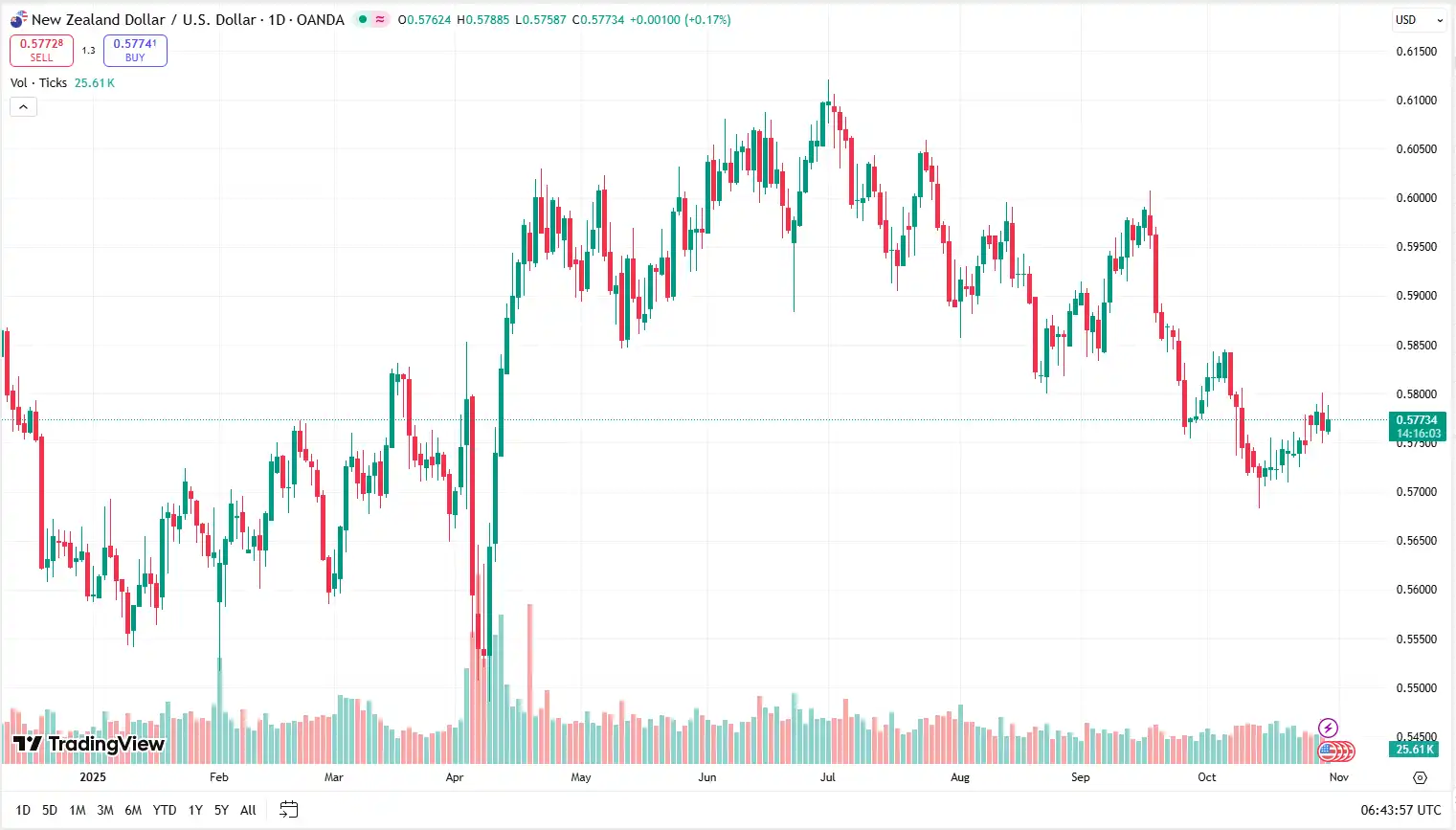
Stay Ahead in the Currency Game
Whether you're a daily FX trader or handle international transactions regularly, our 'Currency Pulse' newsletter delivers the news you need to make more informed decisions. Receive concise updates and in-depth insights directly in your LinkedIn feed.
Subscribe to 'Currency Pulse' now and never miss a beat in the currency markets!
Ready to act on today’s insights? Get a free quote or give us a call on: +44 (0)20 7740 0000 to connect with a dedicated portfolio manager for tailored support.
Important Disclaimer: This blog is for informational purposes only and should not be considered financial advice. Currency Solutions does not take into account the investment objectives, financial situation, or specific needs of any individual readers. We do not endorse or recommend any specific financial strategies, products, or services mentioned in this content. All information is provided “as is” without any representations or warranties, express or implied, regarding its accuracy, completeness, or timeliness.



